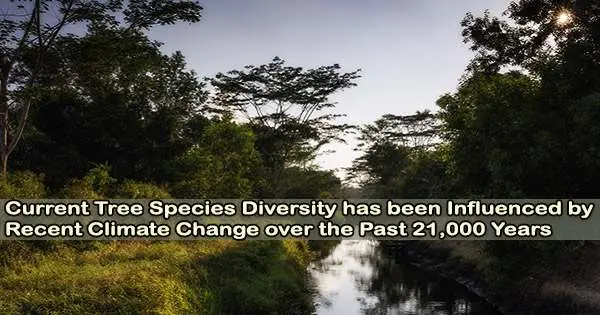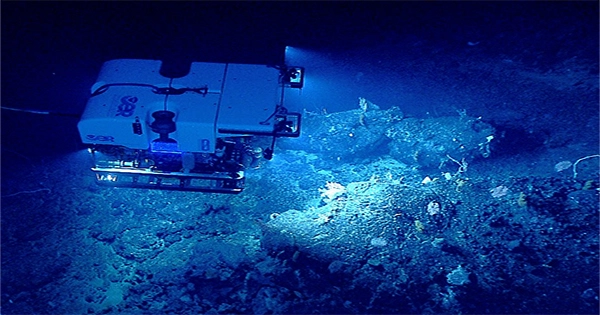Researchers from more than 50 research institutions from around the world, led by Aarhus University in Denmark, have evaluated how past climatic changes have affected how the composition of tree species in one area differs from the composition of neighboring areas on six continents.
What they have studied is called beta diversity, which you can read about below.
They discovered a strong correlation between temperature variations since the height of the last ice age, which occurred around 21,000 years ago, and the global pattern of beta diversity in terms of tree species, species features, and evolutionary history. Furthermore, they demonstrate that previous temperature fluctuations had a greater impact on beta diversity than did contemporary climatic conditions.
Most of the tree species
It should be noted that the researchers have researched only angiosperm tree species, or those that produce seeds encased within a carpel. About 80% of all plant species are angiosperms, and some of the most widespread angiosperm tree species include oak, beech, birch, maple, linden, maple, willow, palm, and eucalyptus.
The researchers combined data from five publicly accessible databases of tree species, ranges, evolutionary relationships across species, and ecomorphological characteristics.
Trees and tree diversity play crucial roles for terrestrial ecosystems, global biodiversity, and humans. This study confirms and extends our previous findings of the high sensitivity of tree diversity to paleoclimatic changes on a global scale. It also suggests that ongoing climate change has the potential to dramatically influence global biodiversity and ecosystem properties not just via direct effects, but also via its effects on trees as ecosystem engineers.
Professor Jens-Christian Svenning
Two different effects on forests
They then divided the effects of ancient climate change on different habitats into two components, each with its own technical term:
- Turnover – i.e. changes due to species replacement. When a species in a habitat becomes extinct, another species steps in to take its ecological place. It turns out that less replacement has taken done in an area the more climate variations that region has undergone since the Ice Age.
- Nestedness. The phrase “beta diversity” refers to a pattern where the species composition in one environment is a subset of the species composition in another, less diverse habitat, with the more diversified habitat containing all the species present in the less diverse habitat as well as additional species. This is an important concept in understanding the organization of biodiversity because it can help identify areas that are more important for conservation. Habitats with nested species compositions may have lower overall biodiversity, but may contain species not found in other habitats, making them essential for preserving overall biodiversity. And the greater the temperature changes an area has experienced, the more nestedness has occurred. Climate fluctuations have thus wiped out local species that have not been replaced.
The authors discovered that the two factors’ influence changed from the equator to the poles.
Due to the quick rate of species change in tropical regions, turnover, or the replacement of species, was the most significant factor in determining changes in species composition between locales.
Because species richness decreases as we approach closer to the poles, nestedness was the main factor in determining changes in species composition in temperate regions.
The study, which was just published in Science Advances, aims to provide ecology science with a method to address the difficult problem of comprehending how current and impending climate change may alter the distribution of biodiversity and ecosystem functioning.
“Because the Earth’s climate has changed enormously through geological time, exploring the effects of past climate change on current biodiversity provides an opportunity to understand the risks emerging from ongoing and future human-induced climate change,” explains the study’s first author, Wubing Xu, who initiated the study at Aarhus University and is now a postdoc at the German Center for Integrative Biodiversity Research (iDiv).
The study, according to the researchers, also offers a fresh perspective on the difficulties in protecting ecosystems and managing attempts to lessen the effects of such changes.
Crucial roles
“Trees and tree diversity play crucial roles for terrestrial ecosystems, global biodiversity, and humans. This study confirms and extends our previous findings of the high sensitivity of tree diversity to paleoclimatic changes on a global scale. It also suggests that ongoing climate change has the potential to dramatically influence global biodiversity and ecosystem properties not just via direct effects, but also via its effects on trees as ecosystem engineers,” emphasizes Professor Jens-Christian Svenning, a co-author of the study.
“I hope these findings can aid the development of conservation and management plans that consider the long-term and diverse impacts of climate change on all biodiversity dimensions. Only then is there a realistic chance that we will reach goal A of Kunming-Montreal’s Sustainable Development Goals for 2050,” adds Assistant Professor Alejandro Ordonez from Aarhus University and senior author of the study.
(The mentioned goal A for 2050 includes that human induced extinction of known threatened species is halted, and, by 2050, the extinction rate and risk of all species are reduced tenfold.)
Beta diversity is a measure of the variation of species between different habitats or areas. By comparing the quantity and types of species found in various locations, it helps us comprehend the diversity of life in a particular region or ecosystem.
You can better grasp the differences in bird species between the two ecosystems by comparing the quantity and variety of birds in a forest against a grassland. It can also be used to track changes in biodiversity through time and to pinpoint areas with rare or unusual species.
















